Marc Chagall
| Birth name: | Mark Zajárovich Shagálov. |
|---|---|
| Artistic name: | Marc Chagall. |
| Nationality: | France. |
| Birth: | 1887, Belarus, Imperio Ruso. |
| Death: | 1985, France. |
| Style: | Modernism, surrealism, cubism. |
Marc Chagall is a French visual artist of Lithuanian Jewish family, born in Belarus. Cheerful, religious, nostalgic, and optimistic in nature, he created paintings and works in various disciplines: ceramics, stained glass, engraving, and illustration. He is one of the fathers of modernism, his works fall within a range of modern styles, especially surrealism and cubism.
Driven by his life's concerns, at the age of 19 he began his movements through the main art capitals of the world at that time: Saint Petersburg, Berlin, and Paris.
He lived through World War I and II firsthand, the latter prompted his flight to the United States in 1941, as he was considered a Nazi target, both for his Jewish origin and his style of art, considered "degenerate" by the German regime.
In the United States, he settled in New York, where he was recognized as a great painter. In 1948, he returned permanently to France, settled in the French Riviera, Nice, where he lived until his last days.
Paintings by Chagall
His works are peculiar, rich in unusual ideas, magical environments, and mysterious worlds. They are exhibited in the most important museums of the world, in Russia, Europe, and the United States.
-
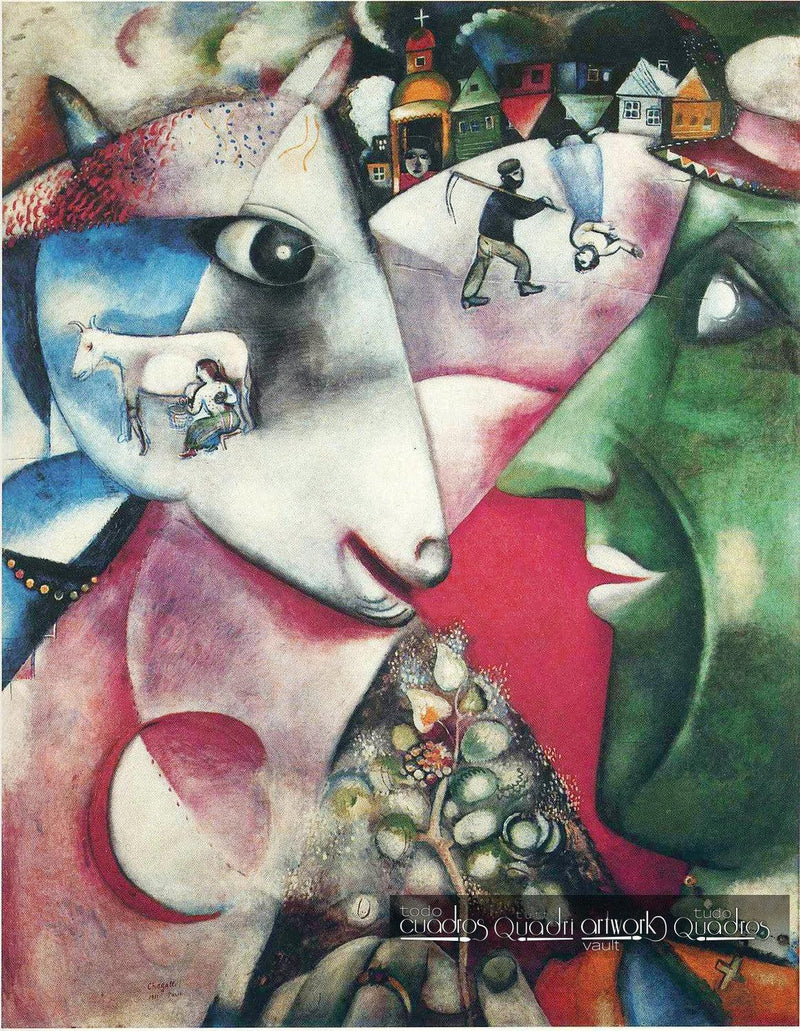
Autor: Marc ChagallTítulo en inglés: I and the VillageStyle: Cubismo, SurrealismoAño: 1911Tipo: CuadroTécnica: ÓleoSoporte: LienzoSe encuentra en: Museo MoMA, Nueva YorkEsta es la obra más conocida de Chagall. La composición fusiona los elementos mayor carga emotiva que el artista vivió en su niñez, en el entorno rural, las afueras de Vítebsk, Bielorrusia. El trabajo de la tierra, campesinos, ganado, casas, iglesia ortodoxa, y en la parte baja un pequeño árbol simbolizando el origen y diversidad de la vida.
Aunque tiene muchos elementos del cubismo, no se puede clasificar puramente como tal, debido a la temática campestre y la utilización del simbolismo. En la opinión del artista: "Para los cubistas, una pintura era una superficie cubierta con formas en un cierto orden. Para mí una pintura es una superficie cubierta con representaciones de cosas, donde la lógica y la ilustración no tienen importancia"
-
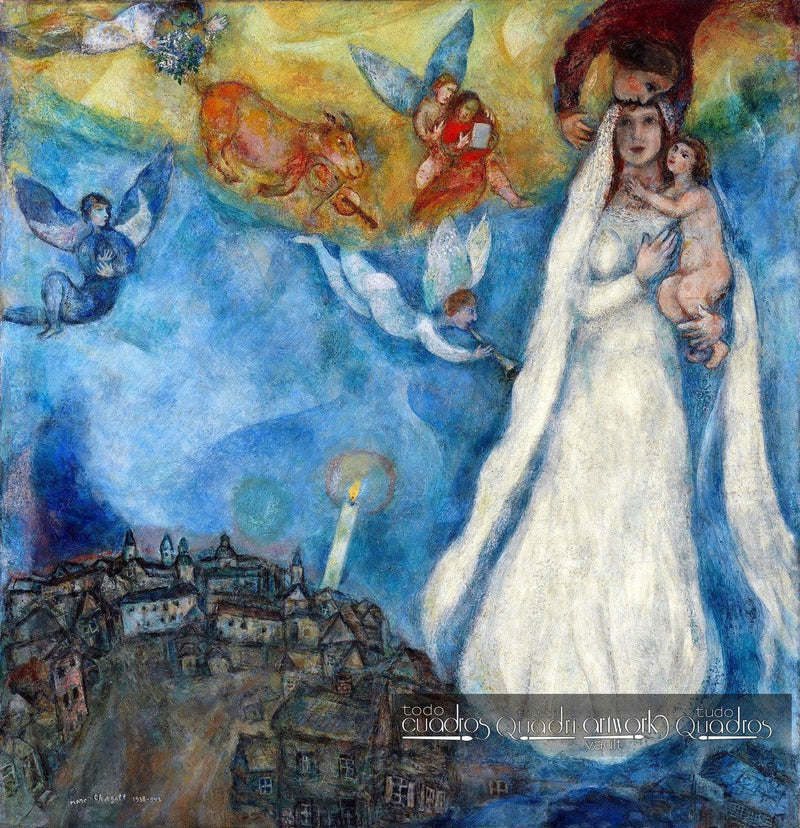
Autor: Marc ChagallTítulo en inglés: Madonna of VillageStyle: ModernismGénero: Religious paintingAño: 1940-42Tipo: CuadroTécnica: ÓleoSoporte: LienzoSe encuentra en: Thyssen-Bornemisza Museum, MadridEsta tela muestra claramente el carácter alegre y soñador del pintor. Tardó dos años en hacerla, comenzó en Francia en tiempos en que el ejército de Hitler comenzaba a avanzar y a arrasar las fronteras galas. Fue terminado 2 años después en Nueva York.
-
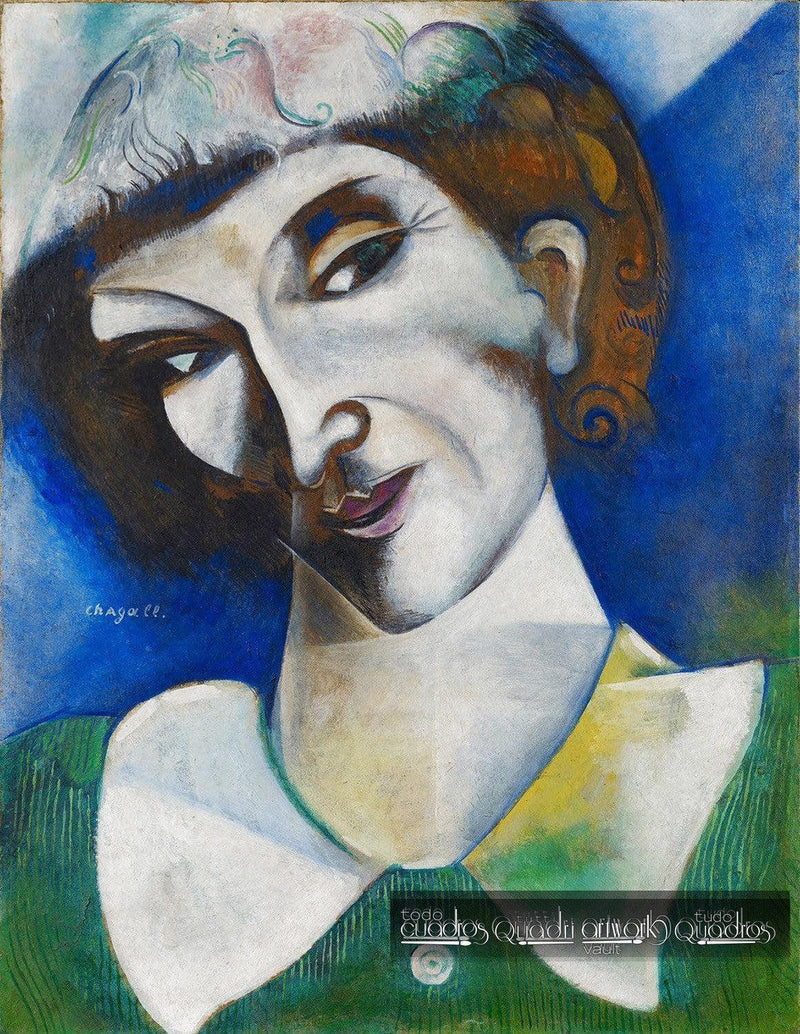
Autor: Marc ChagallOriginal title: Portrait de l'artisteEstilo: ModernismoAño: 1914Tipo: CuadroTécnica: ÓleoSoporte: CartónSe encuentra en: Museo de Arte de Basilea, SuizaChagall se autorretrató en no pocas ocasiones y ciertamente siempre lo hizo de un modo no realista. Para él la representación del estado de ánimo era lo principal.
-
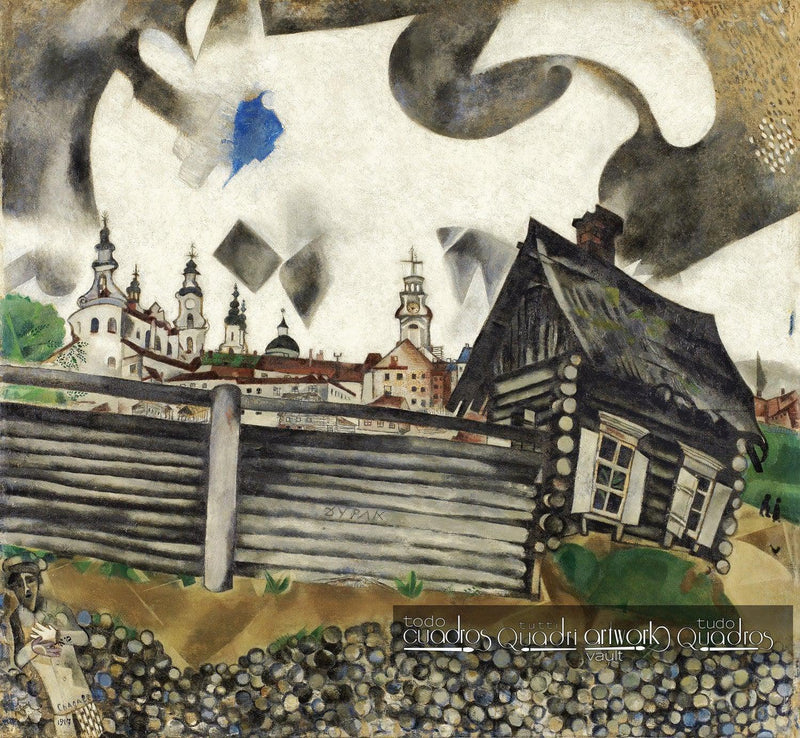
Autor: Marc ChagallTítulo en inglés: The Grey HouseEstilo: Modernismo, CubismoAño: 1917Tipo: CuadroTécnica: ÓleoSoporte: LienzoSe encuentra en: Museo Thyssen-Bornemisza, MadridComposición con planos quebrados, al uso del cubismo, a lo que se agregan otros elementos de cierto realismo. Al fondo describe el paisaje urbano real de Vítebsk, en primer plano una casa de madera típica de la época.
Es un cuadro divertido en sus formas y melancólico en sus colores. A la izquierda un misterioso personaje, aunque no se sabe con certeza, los historiadores ven probable que se trate de una representación del propio artista.
-
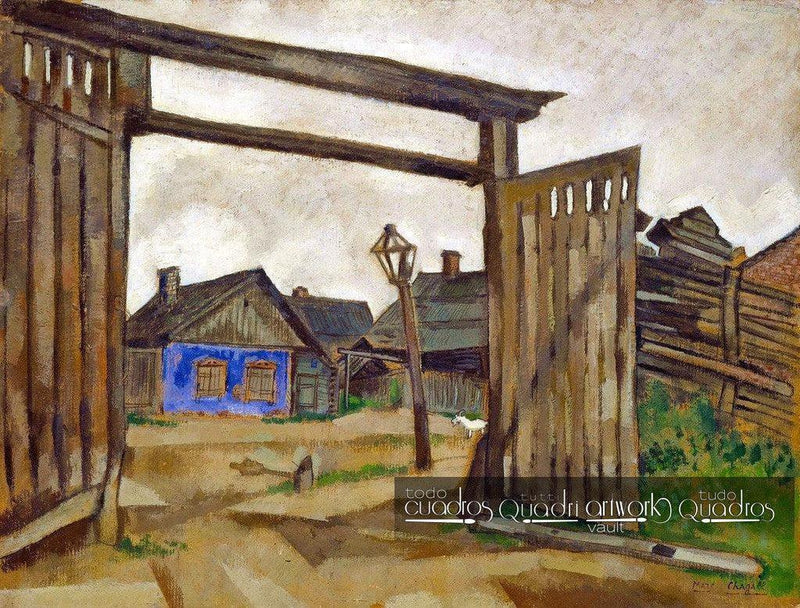
Autor: Marc ChagallTítulo en inglés: House at VitebskEstilo: ModernismoAño: 1917Tipo: CuadroTécnica: ÓleoSoporte: PapelSe encuentra en: Galería Nacional de Arte, Washington, EE. UU.En la misma línea que "La casa gris" esta obra es una loa nostálgica del artista al pueblo donde creció, la pintura tiene zonas con colores muy vivos que contrastan con el entorno en tonos pardos, denotan la gran carga emotiva de la escena, en la mente del artista.
-
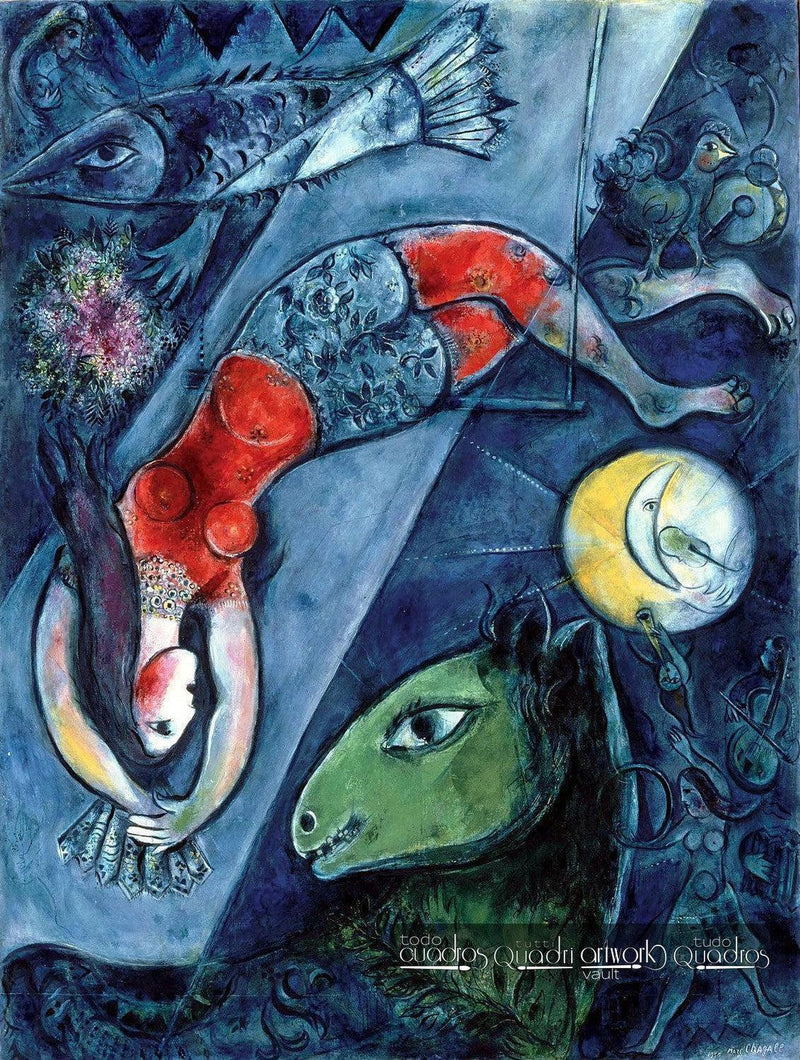
Autor: Marc ChagallTítulo en inglés: The Blue CircusOriginal title: Le cirque bleuEstilo: ModernismoAño: 1950Tipo: CuadroTécnica: ÓleoSoporte: LienzoSe encuentra en: Galería Tate, Reino UnidoEl personaje principal es una trapecista, inmersa en un mundo fantástico de música y circo, este último uno de los temas pictóricos favoritos del artista, quien dijo: "Para mí el circo es un espectáculo mágico que aparece y desaparece como un mundo". Pintado hacia sus últimos años, demuestra un gran sentido del movimiento y ritmo.
-
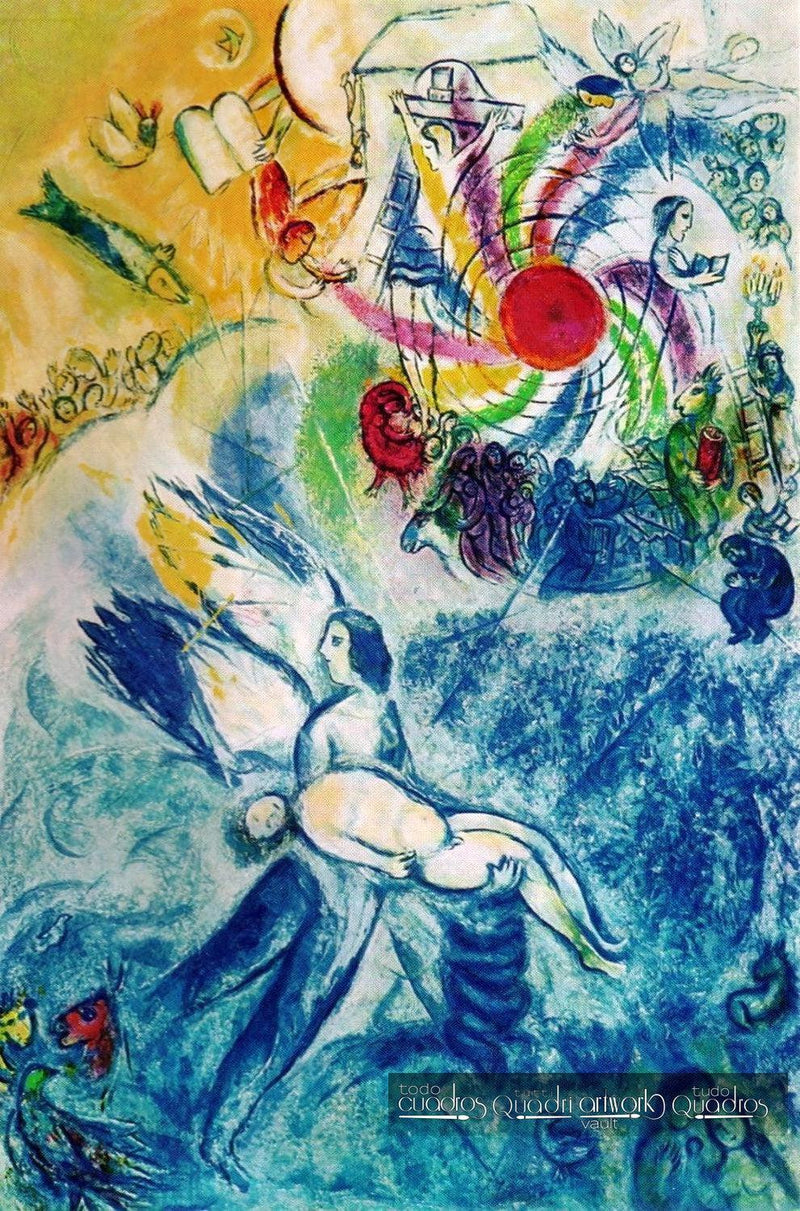
Autor: Marc ChagallOriginal title: La création de l'hommeEstilo: ModernismoAño: 1958Tipo: CuadroTécnica: ÓleoSoporte: TablaSe encuentra en: Museo Marc-Chagall, Niza, FranciaEsta es una de la pintura religiosas más formales y pensadas del artista, por supuesto lejos del canon académico, pero estricto en el canon de la simbología judeo-cristiana. Se trata del relato bíblico del Génesis y parte de los evangelios, donde Dios completa la creación del hombre.
El cielo se presenta con luz amarilla y un sol rojo, sobre el cual gira el pueblo judío, desde antiguo, hasta la crucifixión. La parte baja muestra Adán en brazos del ángel, en medio de la creación.
-
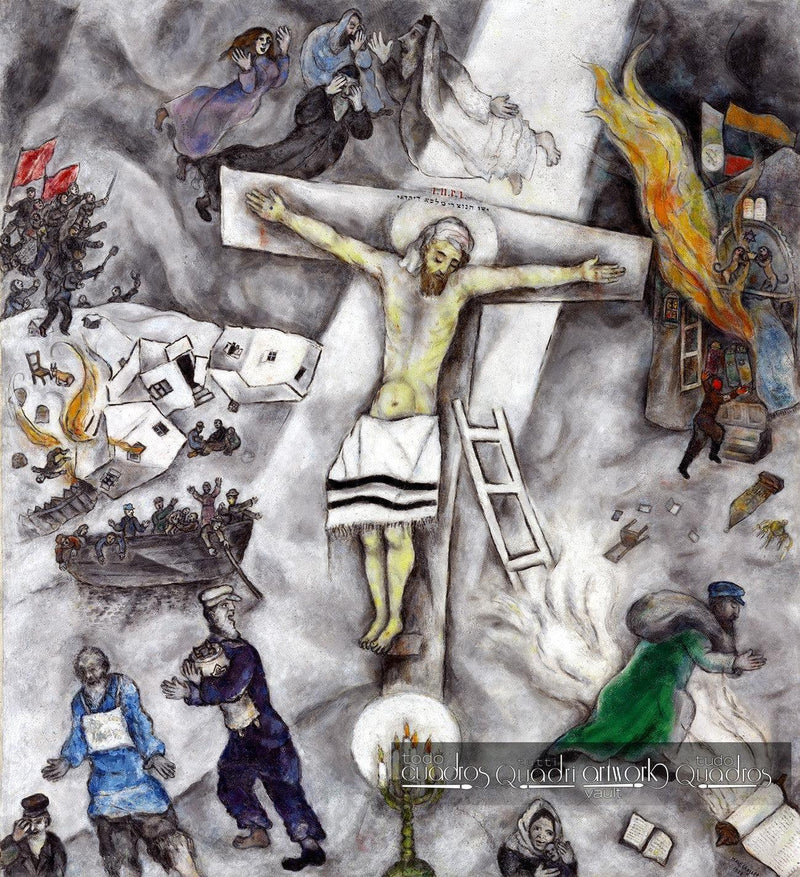
Autor: Marc ChagallTítulo en inglés: White CrucifixionEstilo: ModernismoGénero: Pintura religiosaAño: 1938Tipo: CuadroTécnica: ÓleoSoporte: LienzoSe encuentra en: Instituto de Arte de Chicago, EE. UU.Muestra a Jesús crucificado en el centro y exacerba su condición de judío con diversos símbolos: El Talit que lo cubre (chal tradicional), pañuelo en la cabeza, los patriarcas del antiguo testamento como ángeles flotando. A izquierda y derecha pueblos devastados, sinagogas quemadas y refugiados huyendo en bote
En los años 30, esta obra no estuvo exenta de polémica, ya que presentaba un paralelismo entre el tormento de Jesús y el del pueblo judío, todo esto en tiempos donde la persecución a los judíos era creciente, precisamente 3 años antes del holocausto nazi.
-
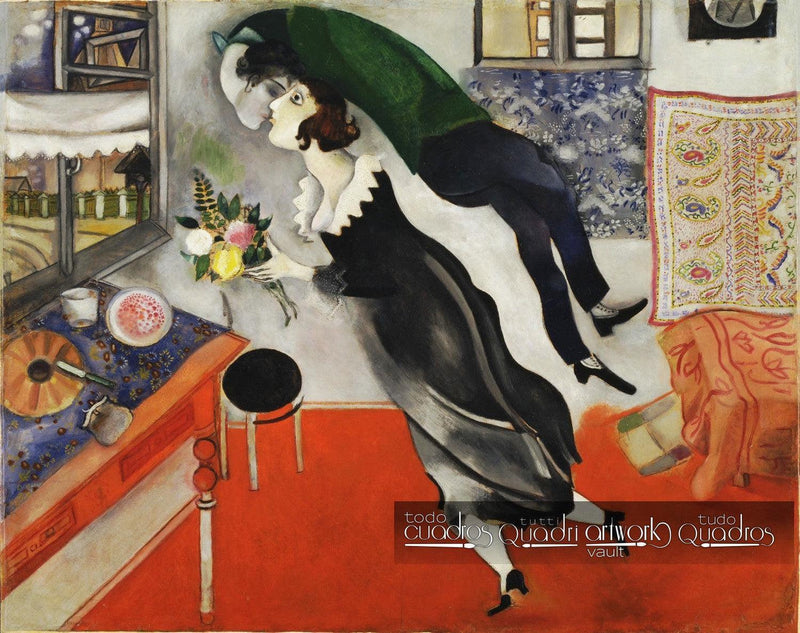
Autor: Marc ChagallTítulo en inglés: BirthdayEstilo: ModernismoAño: 1915Tipo: CuadroTécnica: ÓleoSoporte: LienzoSe encuentra en: Museo MoMA, Nueva YorkRepresenta el día de cumpleaños del propio artista, pone de relieve sus máximas inspiraciones: el amor y la fantasía. La libertad y la alegría de vivir, eran ideas realmente novedosas en el arte, estas no se encuentran en otros autores contemporáneos.
-
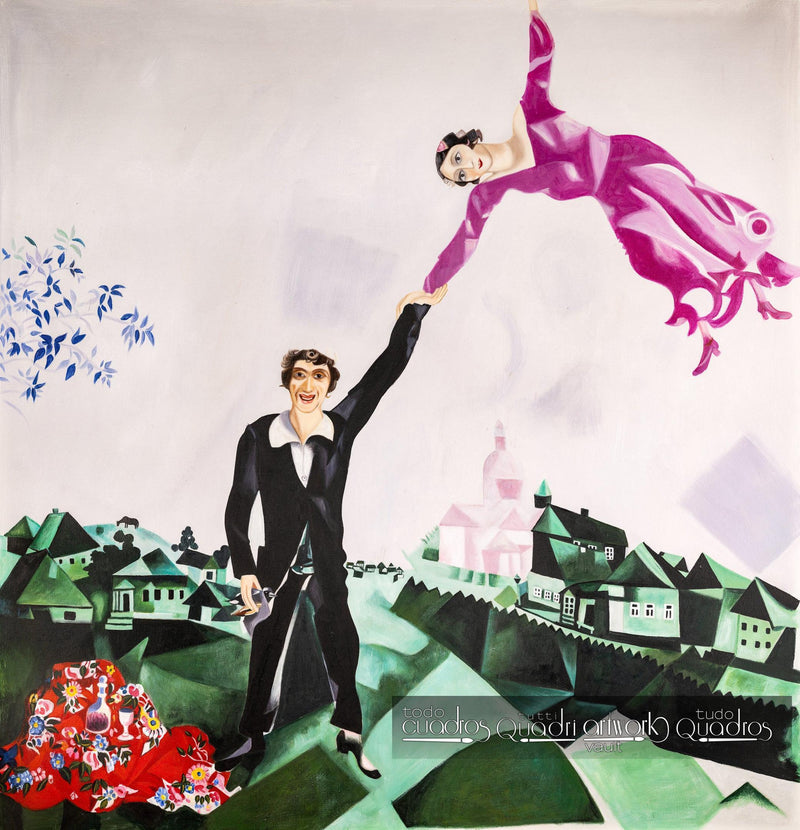
Autor: Marc ChagallOriginal title: La promenadeTítulo en inglés: The PromenadeStyle: CubismoAño: 1917Tipo: CuadroTécnica: ÓleoSoporte: LienzoSe encuentra en: Museo Estatal RusoEs un canto a la alegría y el enamoramiento. Muestra unos esposos paseando en el campo y haciendo un picnic. La mujer vuela a la derecha con un vestido violeta, cogida con gracia a la mano de su amado, quien agarra un pájaro con la otra mano y va vestido elegante, de traje y zapatos. De fondo una villa con casas en verde y un templo en rosa.
-
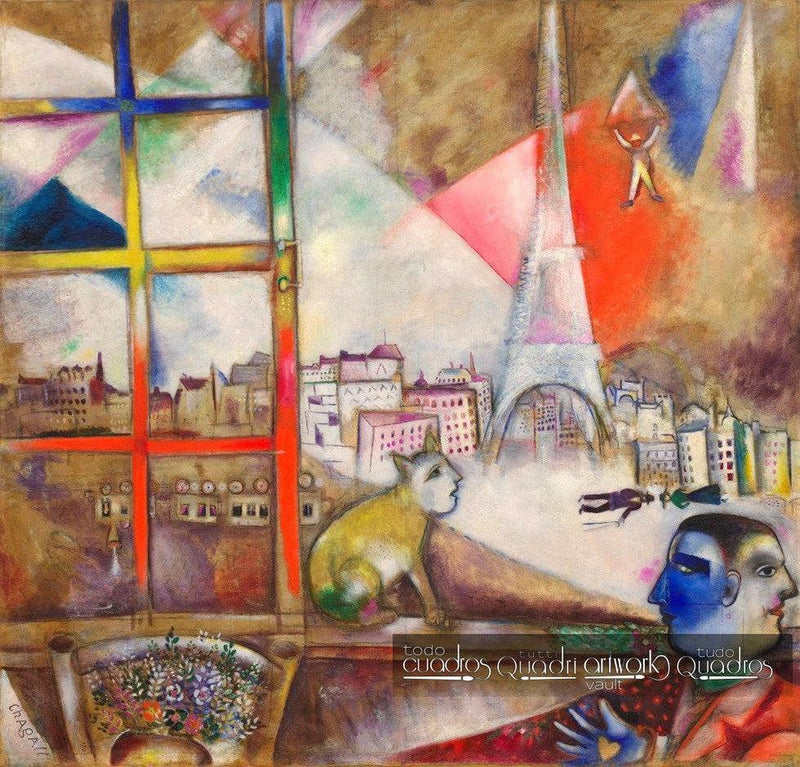
Autor: Marc ChagallOriginal title: Paris par la fenêtreTítulo en inglés: Paris through the WindowEstilo: ModernismoAño: 1913Tipo: CuadroTécnica: ÓleoSoporte: LienzoSe encuentra en: Museo Solomon R. Guggenheim, Nueva YorkEsta tela presenta un paisaje muy colorido de París (la favorita del artista), mirada desde un florido balcón, la ventana y el cielo tienen vivos colores.
El personaje principal, presumiblemente una auto representación, es un hombre de dos caras, pintado en parejas de colores complementarios: rojo-verde y amarillo-azul. Antagonista a sí mismo en muchos sentidos, con un corazón amarillo en su mano azul, representa probablemente la vida de noche y la de día; la bohemia y la soledad; amor y desamor.
Otros personajes y representaciones son misteriosos, tienen una chispa de humor: un paracaidista sosteniéndose con sus propios brazos al paracaídas, un gasto de rostro humano, un tren al revés, una pareja de hombre y mujer en horizontal.
-
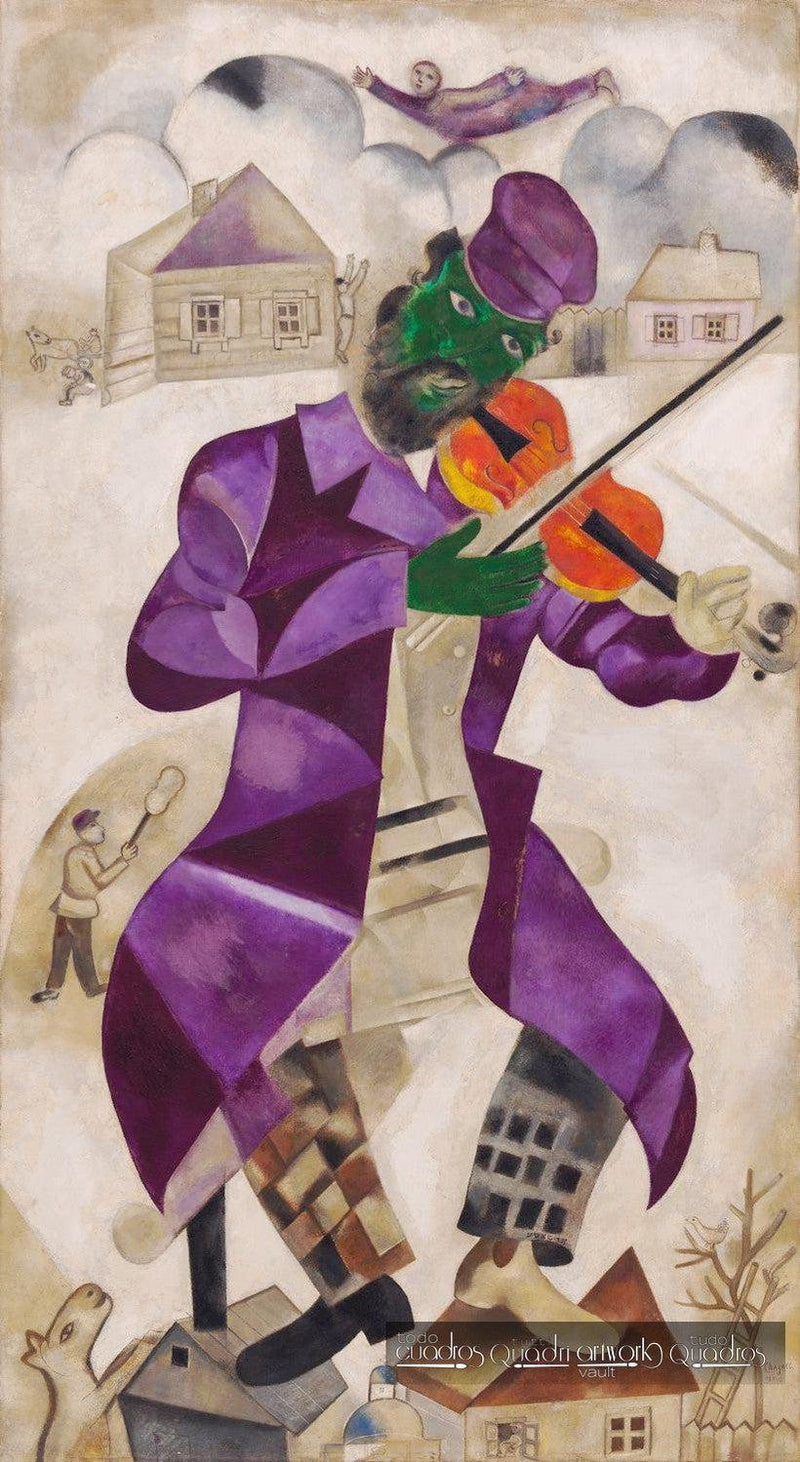
Autor: Marc ChagallTítulo en inglés: Green ViolinistEstilo: CubismoAño: 1924Tipo: CuadroTécnica: ÓleoSoporte: LienzoSe encuentra en: Museo Solomon R. Guggenheim, Nueva YorkPintado a la vuelta en París después de un prolongado viaje a Rusia, en el fondo la ciudad de Vítebsk, representa la nostalgia y la melancolía sobre el pasado y los entornos rurales. En medio una figura fuerte, el violinista, construido con trazos cubistas, gobierna el lienzo, a la vez que hace presente su origen judío.
Purchase it in the section Chagall oil paintings
Related famous painters: relacionados:
↑Back to top

